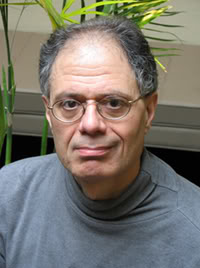It’s said that Art Tatum’s technique persuaded a great many young pianists to be come insurance salesmen. I wouldn’t be surprised if George Steiner’s erudition has had a similar effect on graduate students of English and comparative literature. Watching him nip gaily along, in “George Steiner: A Reader”, from the problems of translating Racine to the poetics of Dada to the “ethnolinguistics of child speech” to the social history of silence, many aspiring literary critics may feel their hearts sinking.
Tatum was more than a virtuoso, of course; with Steiner, one is not always sure. Mountains of learned allusion and ornate periphrasis occasionally yield rather mousy commonplaces, most often when he’s committing theory. And Steiner’s rococo style, though usually charming (if you have any patience for it at all), does at times skirt preciousness (e.g., “There is every reason to believe that in the totality of epistolary production and exchange, the feminine component was major” which means that women letters more often than men; or “It is this immediate unfolding of meaning into force of being which makes of music the most ‘iconic,’ the most ‘really present’ essent known to man,” which means I don’t know what). Even those who commonly admire the erudition of his exposition and the catholicity of his curiosity may nonetheless find occasion to deplore a certain extravagance in his very consonance, a certain superfluousness in his mellifluousness. He lays it on pretty thick sometimes.
Steiner’s grand historical and theoretical pronouncements are arresting, but his local, detailed criticism is more rewarding. Elucidating the muted sexual imagery of “Middlemarch” and “Madame Bovary”, he is delicate and persuasive. His discussion of the conventions of pastoral elegy from Spenser to Auden is compact and rich. His portrayal of Georg Lukács’s career as a representative agon within 20th century intellectual history is convincing. His extended comparisons of Homer’s and Tolstoy’s sensibilities, and of 19th-century America and Russia as fictional backgrounds, are tours de force.
Steiner is probably best known not for his theoretical work on translation or for his practical criticism, but for “The Portage to San Cristobal of A. H.”, a novel about the discovery and capture of Hitler in South America, and for three remarkable, obliquely political essays, all of them included in the “Reader”. “The Cleric of Treason” (1980), from “The New Yorker”, describes the enigma of Anthony Blunt, the brilliant and eminent art historian and Soviet spy. The first half of the essay details Blunts exceptional skill and professional integrity; the second half evokes the milieu of English upper- class insularity and arrogance that, arguably, motivated Blunt’s treason and the oddly ambivalent public reaction to it; the final sentences are a memorable explosion. “The Hollow Miracle” (1959) connects the German language to the rise of Nazism (“Hitler heard inside his native tongue the latent hysteria, the confusion, the quality of hypnotic trance…another music than that of Goethe, Heine and Mann; a rasping cadence, half nebulous jargon, half obscenity”) and argues that the language, and post war German culture, are now dead at the core. “A Kind of Survivor” (1965) is a meditation on Jewishness and homelessness, and a lament for that splendid Central Europe and humanism, largely the product of Jews, which “lies in literal ash.”
These essays canvass two large, related themes that appear often in Steiner’s writing: the decline of humane literacy in industrial society, and the coexistence of humane literacy, or even high culture, with barbarism. In “Future Literacies” (1971) and elsewhere in the Reader he writes ruefully about the supersession of verbal skills and literary memory by new, nonverbal literacies (science, computers, mass culture). It’s easy to be glibly nostalgic in this vein, but Steiner’s nostalgia is earned. When he demonstrates that, without a body of formerly assumed knowledge now quickly receding over the horizon, “Lycidas”, Pope’s “Essay on Man”, the lovers’ dialogue in “The Merchant of Venice”, and other exquisite occasions in English literature are simply inaccessible to most contemporary readers, one sense of loss is acute.
But Steiner’s ambivalence is also acute. What, he asks, the hopes of the Renaissance and the Enlightenment notwithstanding, is the good of humane literacy? His own mental life has been steeped in two categories of memory and image: classical European culture and the Holocaust. The “overwhelming, brutal paradox” of their conjunction haunts him. How could the culture that produced Kant, Hölderlin, Beethoven, Nietzsche, Rilke have gone mad? Is it possible that “high culture, abstract speculation, the obsessive practice and study of the arts, could infect human consciousness with a virus of ennui, of febrile tedium, from which, in turn, would grow a fascination with savagery… I asked myself whether my entire schooling and the intellectual and formal values which it embodied had not made the cry in the poem, the desolation in the sonata, come to seem more real, more immediate to my imaginings than t in the street.”
Steiner has devoted a book, “In Bluebeard’s Castle” (1971), to that question. I won’t give away his answer; it’s a tentative, wistful one, in any case. But it comes as something of a shock that George Steiner, of all people, should feel moved even to wonder aloud whether a little learning is, after all the really dangerous thing.
